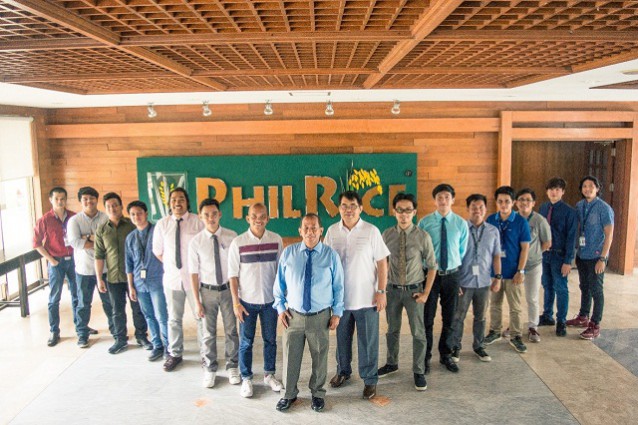
The PhilRice Information Systems Division. Headed by Roger Barroga (C), these programmers and developers are behind the new and updated PhilRice information systems and apps.
Philippine Rice Research Institute (PhilRice) in Science City of Muñoz, Nueva Ecija recently deployed information systems and mobile applications in a seminar titled, “Rollout of New Systems: Meet the IT-credibles of PhilRice!”
Composed of a series of five-minute power talks, the seminar featured 10 information technologies developed or being tested to facilitate rice research and extension efforts and improve Institutional processes.
Arturo Arocena, Jayson Gamilla, and Ronnie Rimando Jr developed new tools for rice research and extension namely, PhilRice Geotagging Tool and PhilRice Presence Portal. The PhilRice Geotagging Tool enables rice researchers and extension workers to gather data, administer surveys, and tag geo-references of project locations, farms, and pilot sites through the use of a smart phone. It works with the PhilRice Presence Portal, a web interface where users can view the tagged locations on the Philippine map.
The developed mobile applications for smart farming include Weeds Recognition Tool and Binhing Palay App. Developers Paul Austrian Alday, Nehemiah Caballong, and Roger Barroga said that the apps use the artificial intelligence (AI) technology.
“The Weeds Recognition Tool helps users identify weeds just by taking photos. Through AI technology, photographs of weeds are analyzed and a list of the closest possible name matches for unknown weeds is generated. Through this tool, farmers and extension workers no longer have to carry around weed posters and catalogs while inspecting their fields,” they said.
Meanwhile, the Binhing Palay App or the PhilRice Rice Variety App lists all the rice varieties in PhilRice along with important information such as pest and disease resistance, grain quality, average and maximum yields, maturity dates, and plant height. It can also recommend varieties according to the type of environment or cropping season, for inbred, hybrid, and special rice.
Systems for human resource, finance, property, supplies, and inventory management, vehicle dispatch, and technical services reservation were also introduced to automate processes within PhilRice. Web reservation system is also being developed for PhilRice visitors for hostel reservation and tour customization.
Data and knowledge sharing platform called RiceIntel, which was conceptualized by Barroga, is also being developed. This intelligence information system enables PhilRice decision makers to access multiple layers of information, which can be converted into thematic maps. The system synthesizes relevant information from PhilRice databases and external sources for quick access and viewing of PhilRice officials.
”These systems developed by the Information Systems Division are designed to contribute to the strategic goal of the rice industry and PhilRice,” Barroga said.




